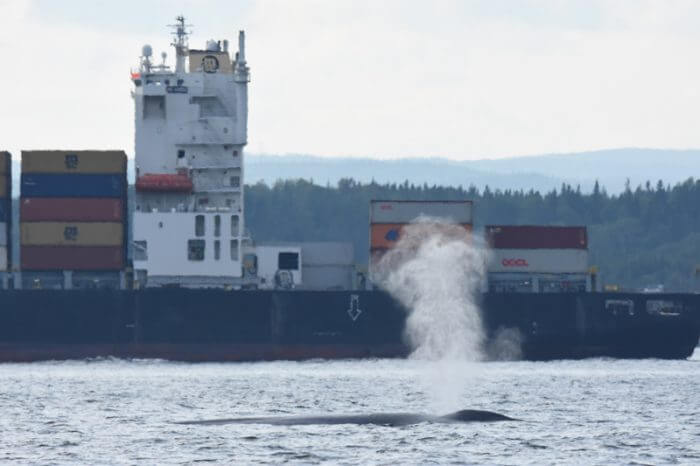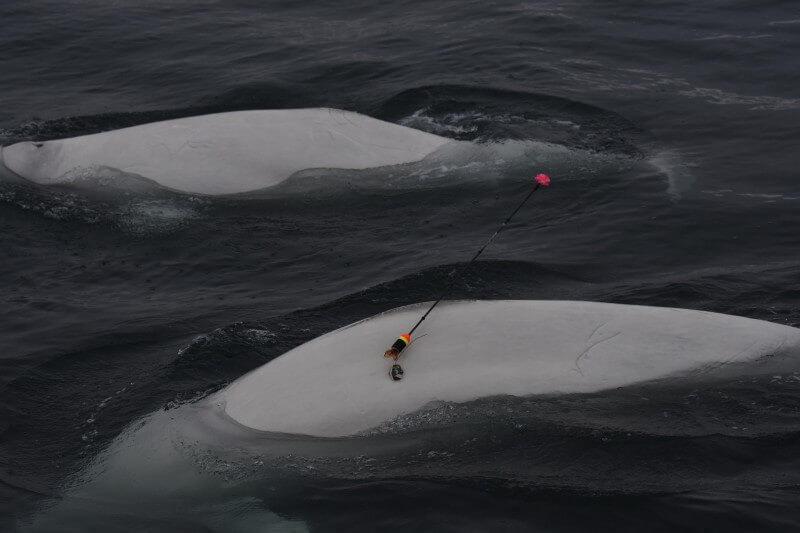If ships knew exactly where the whales were, could we reduce the number of collisions? A number of you have asked us this question. In light of the current state of technology, we would have to say that no, at the present time it is not possible to track whales using transmitters to inform captains of precisely where whales are at any given time. What follows is a brief synopsis of issues related to tag tracking, also known as telemetry.
First of all, placing a transmitter on a whale is no easy task. The transmitter can be held by suction cups or with anchor tips that penetrate the cartilaginous tissue on the dorsal fin or base of the dorsal fin, depending on the whale species being targeted. Since the suction cups only hold for short periods, this technique would not be appropriate for tracking whales over great distances.
For tags anchored in the cartilage, implanting the tag requires getting very close to the animal and shooting the tag with sufficient force and precision so that it holds in spite of diving activity, changing water pressure with depth, contact, etc. To increase the chance of success, the boat must be positioned extremely close to the animal, which can cause the latter significant stress. In addition, the holes caused by the anchor tips can become infected and cause health issues, or even death, as was the case for the killer whale L95. These issues thus raise an ethical question about the value of collected data versus potential risks, especially for endangered species or populations such as the St. Lawrence beluga or the North Atlantic right whale. However, for a number of projects such as those aimed at tracking migrating blue whales, these tags provide crucial information.
Depending on the type of tag, the target cetacean species and how well the tag is attached to the animal, the tag will last anywhere from a few hours to 70 days, with some exceptional cases of up to several months. This approach therefore does not seem possible for long-term monitoring using currently available technologies.
Since radio telemetry (VHF) is generally used for short-term monitoring – for example, to understand the diving behaviour of a whale during feeding activities – satellite telemetry would be preferred. Satellite tags provide a reading of the animal’s position only when the latter surfaces. There may be tens of kilometres between any two positions, which means that it is not necessarily possible to know where the animal is at any given time. The quality of the position data will also vary depending on whether the animal has surfaced completely or the location of satellites as the tag emerges from the water. In any case, the animal’s position is not known on a continual basis.
Lastly, the cost of each tag is in the order of several thousand dollars. A large-scale tagging program would therefore be extremely costly.
Acoustic detection of whales by autonomous submarines (gliders), aerial surveillance, ship surveillance, the Whale Alert system (which allows vessels to share marine mammal observations), speed reductions in certain high-risk areas and even voluntary speed reductions therefore still seem to be the preferred methods for preventing collisions.






